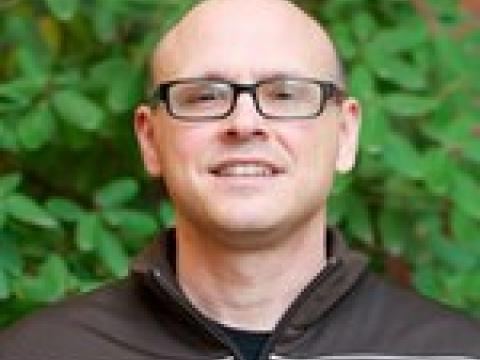
Scott Stewart
B.S., Biochemistry, University of Washington
Ph.D., Biological Chemistry, University of Michigan
Contact
Research Interests
Our long-term goals are to understand the molecular mechanisms that enable zebrafish to regenerate tissues and organs after severe damage, thereby gaining knowledge to rationally design new therapeutics to treat bone maladies. Bone disease and fractures are among the most common, debilitating, and costly human health concerns. While human bone can imperfectly repair, we cannot regenerate lost or severely fractured bones and our capacity for bone repair greatly diminishes with age and disease, such as diabetes. In contrast, throughout their life zebrafish completely regenerate damaged or lost bones after caudal fin amputation, providing an example of innate, perfect bone regeneration that could be recapitulated as a therapeutic strategy. Adult fins comprise multiple cell types, including bone-producing osteoblasts, fibroblasts, endothelial cells, neurons, and epidermal cells (Fig. 1). Following amputation, regeneration of the lost tissue is driven by lineage-restricted progenitors generated by dedifferentiation of mature cells near the injury site. Each of these cell types, and their derived tissues, then regenerate in concert after amputation resulting in a new fin.
Though significant progress in the field has been made over the last decade, we still lack answers to the oldest, most basic and pressing questions:
- What triggers regeneration?
- How does the fin “know” when to stop regenerating?
- Why don’t humans regenerate appendages like zebrafish?
Our recent work in collaboration with the Stankunas lab demonstrated zebrafish bone regeneration is driven by lineage-restricted osteoblast progenitors (pObs) generated by dedifferentiation of mature osteoblasts at the site of injury (Fig. 2). Following dedifferentiation, coordinated Wnt and Bone Morphogenetic Protein (BMP) signaling directs pObs to self-renew and redifferentiate, respectively, to progressively re-form the bony fin rays. BMP-dependent osteoblast re-epithelialization and maturation is lineage-intrinsic while the Wnt ligands that maintain pObs are lineage-extrinsic, produced by a specialized group of neighboring non- osteoblast cells, the Regenerating Fin Progenitor Niche (RPN). Therefore, supplying damaged human bone with an RPN-like niche or recapitulating its activities are attractive strategies to enhance bone healing. However, the cells, transcriptional regulators, and signaling networks that comprise and control the RPN are unknown. Further, it is unknown how Wnt mechanistically maintains a pOb progenitor pool.
Current projects in the lab include:
- Determining the cellular origins, organization, and fate of the RPN.
- Determining transcription factor networks that define the RPN.
- Identifying how Wnt maintains pObs as a self- renewing, mesenchymal population.
